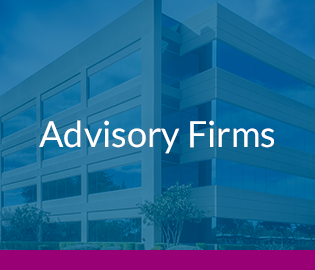 The traditional annual performance review is losing favor with some advisory firms, but without a systematic approach to reviewing advisers, operational and support staff performances how can you objectively determine pay raises, bonuses and promotions? Therein lies the dilemma many advisory firms face as they head into the employee annual review process. I hear from many firm owners and advisory staff members that they are dissatisfied with the current system, citing it’s too time-consuming, produces an awkward dynamic, and creates an unhealthy competition among team members. All of these are viable reasons to ditch the process altogether. Instead I suggest you modify how your think about the annual practice. The review process is not that dissimilar to the planning process you have in place with your clients. You meet with your clients on a regular basis (monthly, quarterly, annually) to check-in and make sure they are progressing along the path the financial plan has laid out for them. You make tweaks and adjustments to their plan as circumstances and situations dictate. Some clients may require more help as their needs change. The relationship you foster and grow with your employees is very similar and I encourage you to treat annual goal setting and reviews with as much rigor, consistency and thoughtfulness you apply to the client experience. Specifically: improve goal setting to make it more flexible and responsive; provide more effective performance feedback by making it part of everyday work; and make the assessments more forward-looking and coaching opportunities.
The traditional annual performance review is losing favor with some advisory firms, but without a systematic approach to reviewing advisers, operational and support staff performances how can you objectively determine pay raises, bonuses and promotions? Therein lies the dilemma many advisory firms face as they head into the employee annual review process. I hear from many firm owners and advisory staff members that they are dissatisfied with the current system, citing it’s too time-consuming, produces an awkward dynamic, and creates an unhealthy competition among team members. All of these are viable reasons to ditch the process altogether. Instead I suggest you modify how your think about the annual practice. The review process is not that dissimilar to the planning process you have in place with your clients. You meet with your clients on a regular basis (monthly, quarterly, annually) to check-in and make sure they are progressing along the path the financial plan has laid out for them. You make tweaks and adjustments to their plan as circumstances and situations dictate. Some clients may require more help as their needs change. The relationship you foster and grow with your employees is very similar and I encourage you to treat annual goal setting and reviews with as much rigor, consistency and thoughtfulness you apply to the client experience. Specifically: improve goal setting to make it more flexible and responsive; provide more effective performance feedback by making it part of everyday work; and make the assessments more forward-looking and coaching opportunities.
Goal Setting
Goals communicate to employees what is expected above and beyond their basic job tasks; goals link to targeted objectives and reveal to employees how their individual performance contributes to the firm’s overall results.
Without clearly articulated goals, it can be a challenge to motivate employees to attain the right results. Firm-wide goals and objectives are just as important as individual goals. They provide context, helping employees understand how their tasks contribute to what the firm is looking to achieve. A few to spell out: How many new clients is the firm aiming to win? What level of profitability is desired? What kind of experience does the firm hope to deliver — and what does that look like from the client’s point of view?
The work environment today changes too rapidly to set goals only once per year. To remain current, relevant, and impactful, goals need to be updated as situations change. Moreover, a year is too long of a time horizon to motivate action. It is difficult to set goals with sufficient specificity that cover an entire year for most jobs; in fact, different jobs require goals with different time horizons. Try breaking down big job functions into tasks that can be achievable and measured in a timely manner. For example: Goal: As a member of the Investment Committee, proactively research new securities to be utilized by the firm. Revised Goal: At least one week prior to each Investment Committee meeting, conduct research on 2 potential new securities and create a written summary outlining pros and cons of investing in the new securities to be presented to the Investment Committee. This type of relevant goal will keep your employee motivated and engaged throughout the review cycle.
Applying a one-size-fits-all rule for goal setting simply does not work well for everyone. It may seem cumbersome and daunting to create goals and objectives for the different positions in your firm, but the end result will reward these efforts. Some best practices worth considering:
- Employees and managers should collaborate in setting no more than three to five performance goals that clearly relate to the organization’s priorities.
- Goals should be brief and include only the most important results the employee is expected to achieve.
- Base the timeframe for these goals on what is relevant to the job. That is, what is the time horizon for which the employee and manager have line of sight? When in doubt, quarterly goals can be a good rule of thumb because three months is enough time to accomplish a significant result, and setting goals that can be achieved or revised each quarter is not onerous if the process is streamlined.
- Strive for meaningful goals. While some jobs lend themselves to quantitative metrics, measures of success in other jobs are more subjective. Don’t lose sight of what’s most important for your team to accomplish.
- Ensure goals are sufficiently challenging. A successful goal is one that will push employees outside of their comfort zones so that they must put forth a great deal of effort to achieve them. Meeting the goal should be a significant and meaningful accomplishment.
Provide Real-time Feedback
Some firms require performance check-ins once or more during the year. The intent of these meetings is to provide feedback in between goal setting and performance evaluation. It’s an opportunity to check progress and ensure the employee has feedback and a chance to course-correct before the end of year. The level of formality with these check-in meetings varies by firm. In some, a simple conversation is all that’s required. In others, the process is almost as formal as the end of year review and includes a written self-assessment, manager rating, a written narrative, and a performance conversation.
I highly recommend stepping-up these efforts and incorporating feedback into part of an ongoing routine or as I like to call it “real-time” feedback. This type of dialogue allows managers and employees to discuss what steps are being taken to reach goals, how far along a project has evolved, and what roadblocks need to be removed to finish an assignment. You may be reading this thinking “now wait a minute, more frequent check-ins with employees, this sounds like more work for me”. Actually, more-frequent check-ins actually saves time. It can take several weeks a year to do an annual performance review, and it is time consuming to try and remember what someone did at the beginning of the year. Frequent and regular check-in meetings make the feedback more relevant to the employee. This will help to correct any issues that come up and ensure that your employees stay engaged. For example, imagine waiting until the end of the year to get a summary of your Fitbit step count. The information obtained wouldn’t be as timely or relevant, and it certainly wouldn’t change your behavior much.
In addition, ask employees to assess their performance and focus on accomplishments and areas for improvement. This dialogue creates the opportunity to encourage staff development and continuous improvement year-round. Equally important is asking for input on areas for development and talking about career goals, specifically the path for them in your firm.
Traditional Feedback versus Coachable Moments
Today’s workforce (largely millennial) doesn’t see their managers as experts the way their predecessors did, because all the information they think they need is readily available to them online. Instead, they look to their managers for coaching and mentorship, and find purpose through constantly learning and growing on the job. If you want to develop high performers, you must be equipped to coach and empower them. So stop managing performance and start actually developing it. Here is an example of what I mean; Traditional Feedback: “At the last client meeting, you did a nice job of setting the agenda and kicking things off. However, you didn’t engage Sue (the wife) and you let Jeff (the husband) dominate the planning conversation.”
Coachable Moment: “Let’s discuss how that meeting went. What did you think went well? I agree the agenda was very clear – any lessons learned that would help you continue this habit in the future? What would you do differently the next time? I agree Jeff seemed to dominate the conversation. What techniques will you try next time to keep things more balanced?”
Remember that two-way open communication is essential to an effective working relationship. Also, create a simple system for recording and documenting your employees’ performance over the course of the year. Jot down notes after these informal feedback sessions, rather than relying on your memory, to reference later as needed for the written review.
As you head into the end of the year and contemplate assessing your employees ask yourself the following questions: What impact does the performance review process have on motivating, engaging and retaining your employees? What impact does the process have on the firm’s performance?
Ideally your performance review process should help employees develop and grow, improve communication between employees and managers, align individual work to achieving the organization’s goals, and facilitate individuals and teams to perform to their highest potential.
No Annual Performance Review System? Don’t Panic.
If you haven’t created a formal performance review process for this year but need to review your team, shift the responsibility for the assessment over to your employees. Ask them to identify the following: their top three to five accomplishments and contributions to the success of the firm; one or two things that could have gone better during the year; and two or three areas that the employee wants to develop and improve in the new calendar year. Then engage in a conversation about career goals, and a specific path in your firm. Find out what career goals and plans your employees have, and discover whether those are in alignment with the company’s plans — then talk about the skills and experience they’ll need to develop. This conversation will position you as a career mentor and coach, a much more positive relationship to have with your key talent.
Kelli Cruz is a Financial Planning columnist and the founder of Cruz Consulting Group in San Francisco. Email her at kelli@cruzconsultinggroup.com or follow her on Twitter at @KelliCruzSF.
From Financial Planning






